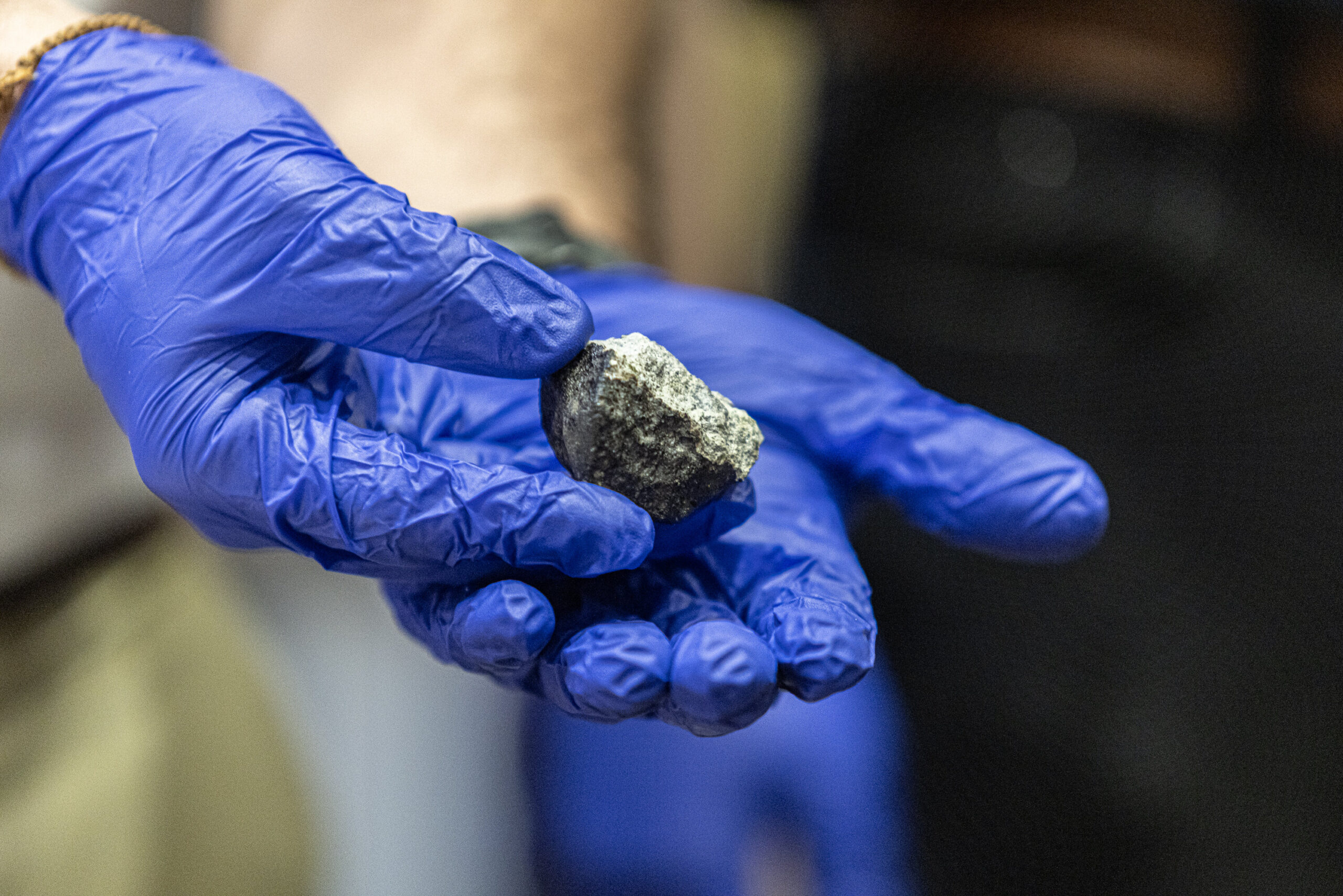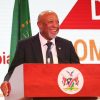
By Bonface Orucho, bird story agency
On Sunday, August 25, A meteorite lit the skies of South Africa’s Eastern Cape, peppering the region with rock fragments. Some were found as far as Kirkwood, over 100 km from St Francis where others were spotted.
Initially mistaken for space debris, the motorcycle-sized object streaked across the sky on Sunday morning around 9 am, emitting a bright light as it descended at a speed of more than 72,000 km per hour.
According to Roger Gibson, a professor at the University of the Witwatersrand’s (Wits) School of Geosciences, “Friction with the atmosphere created a spectacular fireball and caused it to break up in flight.”
The object which has now been confirmed to be a meteorite sparked a collaborative scientific investigation highlighting the excellence and unique talent of scientists from some of the leading universities in Africa.
At a joint press briefing on September 3 at Rhodes University, scientists from Nelson Mandela University, the University of Witwatersrand, and the host university demonstrated their ability to unveil minute details of this rare natural event and asteroid in a remarkably short time.
“The meteorite’s fall presents us with invaluable data that could contribute significantly to global knowledge,” Gibson who is the lead scientist in the research on the asteroid, said.
“This is an opportunity for Africa to take a leading role in understanding cosmic phenomena.”
After the Sunday event, the scientists issued a public call inviting citizens and witnesses to share reports about their experience with the meteorite.
“We have received over 150 reports, and it’s growing every day, and keep them coming. We would like to see what people have to say,” Gibson explained.
The collaborative effort, which included the involvement of local citizens like nine-year-old Eli-zé du Toit, has already proven successful. Eli-zé was while sitting on her grandparents’ porch in Nqweba before the incident. She collected rock fragment while they were still warm.
Another eyewitness, Zoë van der Merwe captured a video of the incident while walking with friends near St Francis Bay.
A collected rock fragment which weighs about 90g has already been cataloged and labeled as “Nqweba Meteorite.”
The scientists believe it falls into the achondrite meteorite, a rare class within the Howardite-Eucrite-Diogenite (HED) group.
According to Carla Dodd from Nelson Mandela University scientist the specimen has a dark black glassy coating with a light gray interior, peppered with dark green and light green grains and clasts.
“Our continent is uniquely positioned to observe and analyze such events, giving us an edge in contributing to global space research,” she said, emphasizing the strategic importance of Africa’s geographic location and scientific capabilities.
Wits University, is already known for being an internationally-accredited repository for meteorites.
For instance, in 2005, the Vredefort Dome—the rounded peak created by rebounding molten rock at the impact’s center—became South Africa’s seventh World Heritage Site, serving as the most visible remnant of the meteorite strike.
Other meteorite sites include the Tswaing Crater, located 40km north of Pretoria; the Kalkkop Crater in the Karoo near Graaff-Reinet; and the Morokweng Crater, formed approximately 145 million years ago in the Kalahari Desert.
Across Africa, over 12,500 meteorites have been recovered since the first, Siratik, was found in Mali in 1917, according to African Meteorite, a book account of meteorite finds in Africa.
According to the scientists the coordinated investigation will continue, focusing on analyzing fragments found near Kirkwood, examining the atmospheric interaction of the meteorite, and leveraging this data to enhance our understanding of such rare astronomical events.
This joint effort showcases Africa’s growing capacity to lead in scientific endeavors that have global implications, particularly in the field of space science.
“This is not just about studying a meteorite; it’s about Africa contributing to the global narrative of space exploration and understanding,” explained Professor Gibson. “We’re not just observers—we’re active participants in solving these cosmic puzzles.”
The significance of this meteorite fall extends beyond national boundaries, placing African scientific institutions at the heart of a global effort to decode the mysteries of the universe.
The analysis of the sample collected will now move from using optical light to employing a scanning electron microscope which uses electrons to offer a more precise analysis of a sample.
“This will be used to obtain the chemical compositions of minerals… to get mode of abundances, so, how much of different minerals are in the sample and map a thin section for future analysis,” Dr Leo Vonopartis from University of the Witwatersrand explained.
bird story agency











